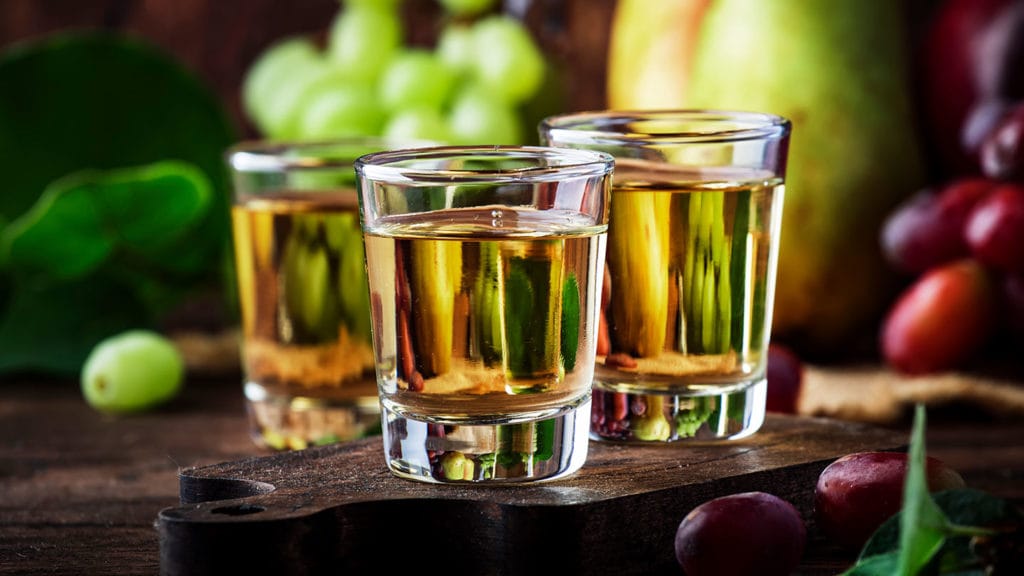
Rakija is one of the most famous Serbian brands. It is an alcoholic drink made from the distillation of fermented fruit. It is a clear-as-water kind of drink, with a percentage of alcohol that can range from approximately 40% to 65%. Rakija comes in many shapes and sizes and has many different flavors in offer. The process of making rakija is not so demanding either. And if you succeed in mastering it, you will definitely be considered a local.
The favorite ones of many are sljivovica (plum), kajsijevaca (apricot), and dunjavaca (quince). At the same time, they are the most enjoyable. There is a belief that rakija is the cure for and cause of everything. This turned out to be true in many ways. Another important thing you should know is that it has its own tradition, rituals, and particularities. Prepare yourself before you come to Serbia because rakija is a step you cannot skip.
The process of making Rakija
Serbia has always been a fruit-growing country. Its terrain and climate make fruit healthy, tasty, and abundant. Such high quality of fruit made it possible to produce rakija in the first place. You can make good quality rakija from the fruits of any fruit species. However, the important thing is to follow the whole process, from boiling to roasting.

The process of making rakija is simple. You just need to follow these steps:
- crush ripe and healthy fruit and put it in a barrel to boil;
- add 5% of sugar during placing;
- do not fill the barrel to the end, you should leave up to 20 cm empty;
- stir during fermentation;
- cover the barrel lightly so that no flies can enter.
Once the fermentation is complete, it is crucial not to delay with distillation. It can take up to two months for that or you can wait until the spring. The art of making rakija is in capturing just the best part of the distillate. You distillate it slowly, over low fire, so it would not burn. A good rakija contains 40-45% alcohol, trickles smoothly down the throat, warms the chest, and does not burn in your mouth.
Favorite Serbian brand
We make rakija from various types of fruit – plums, apples, apricots, quinces, pears, grapes, figs, raspberries, blackberries. Very often Serbs add various medicinal herbs and honey, in order to improve the taste and quality. It is similar to vodka and brandy in its properties, and many believe that certain types of this intensity can match whiskey. You will often hear the Balkans “swear” that brandy is better than whiskey. But we should not discuss tastes. The fact is that both rakija and whiskey should be consumed in moderation.
The popular plum rakija is the only protected brand in Serbia. Although kajmak, ajvar, and some other foods certainly originated in this area, we did not do enough and hurried to protect them as a Serbian brand. However, some other countries did, such as Bulgaria or Slovenia.

Rakija of poor quality is called “brlja” in the Serbian people, and the one whose quality is excellent is also called “gromovača”. This strong drink must be stored in wooden barrels or glass packaging, never in plastic bottles. Plastic and inadequate packaging takes away its quality. Rakija is colorless, and the one that is a wonderful golden brown color is kept in wooden barrels, most often of oak wood.
Why we drink and idolize it?
The novelist and painter Momo Kapor said it best: “In rakija is the essence of the Serbian being—first joy, the celebration of taste, then anger, compassion, the feeling that the world is good and that all those who drink it are friends.”
Do not think that rakija is the only alcoholic beverage that Serbs drink. We drink the others, as well. Still, Serbian rakija is our tradition and something many know us for. Before trying it, we have an advice for you. Do not drink it too quickly. Try to enjoy every sip of it. Cheers!
Did you like this article? For more interesting stories and useful information, follow our News section and our Instagram page.